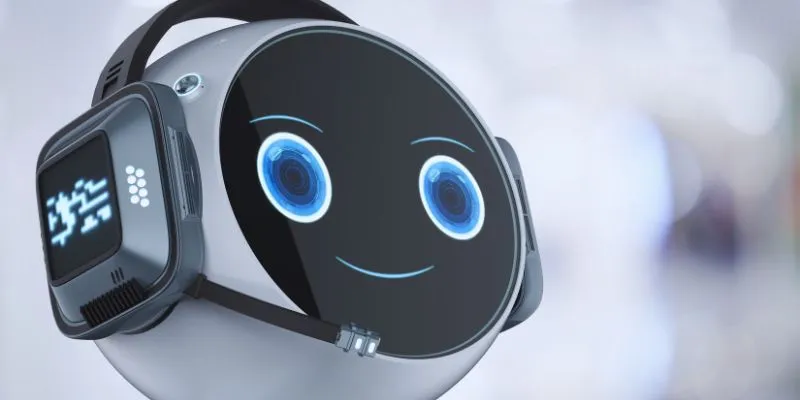In 2025, conversational AI has emerged as a leading tool for businesses. Its unmatched ability to swiftly respond to customers and handle numerous interactions simultaneously is transforming business operations. But conversational AI’s capabilities extend beyond merely answering calls or resolving common queries. It is integrating with other technologies to provide comprehensive business solutions. This article explores the top conversational AI trends to watch in 2025 and how they are shaping the future of customer communication.
What is Conversational AI?
Conversational AI enables machines to communicate with humans. It leverages technologies like Natural Language Processing (NLP), Machine Learning (ML), and Automatic Speech Recognition (ASR) to understand, process, and respond to human language. Examples include Siri, Alexa, and advanced chatbots, which can handle complex queries and engage in human-like small talk.
Businesses are increasingly using conversational AI for customer service, providing instant responses and resolving common queries without human intervention. This technology saves businesses significant costs associated with hiring customer support teams while enhancing customer trust and loyalty.
A report from[** MarketsandMarkets](https:/www.marketsandmarkets.com/Market- Reports/conversational-ai-market-49043506.html) indicates that the conversational AI market, valued at $13.2 billion in 2024, is projected to reach $49.9 billion by 2030, growing at a rate of 24.9% annually.**

Top 5 Conversational AI Trends for 2025
Hyper-personalization
AI is becoming adept at understanding users, remembering past interactions, and offering tailored responses that help businesses and customers find the right products.
Multimodal Conversations
Previously limited to text, conversational AI now supports voice, video, and gestures, making communication more intuitive and natural.
Self-Learning AI
Modern AI systems learn from data and adapt to current trends without manual updates, enabling them to keep pace with market demands.
API-Driven Transactions
Conversational AI now facilitates processes like order placements, appointment bookings, and account management directly within chat applications.
Emotional Intelligence in AI
AI is advancing in recognizing emotions and responding empathetically, enhancing customer service, mental health support, and human-like interactions.
The Future of Conversational AI Beyond 2025
The use of conversational AI in various industries is on the rise and is expected to expand further. Future possibilities include:
- Quantum AI Advancements: Quantum computing could enable AI to process vast datasets instantly, leading to more accurate interactions and predictions.
- Expanding Language Support: As AI learns more languages, global communication becomes more accessible and seamless.
- AI in Creativity: Conversational AI could assist in creative processes like writing and music composition, working alongside humans to enhance creativity.

Challenges in Conversational AI
As with any technology, conversational AI faces challenges that businesses must address:
- Difficulties with Integration: Integrating AI with existing tools like social media, CRM, and business software can be challenging, slowing adoption rates.
- Bias in AI Responses: AI can inherit biases from its training data, potentially leading to unfair or inappropriate responses that harm user trust.
- Privacy and Security Risks: Concerns over data storage and usage require businesses to adhere to regulations like GDPR to protect customer data.
- High Costs: While maintaining AI systems can be costly, their benefits often justify the investment.
Being Transparent: Users should be informed when interacting with AI
and how their data is used. Transparency fosters trust.
- Accessibility: Conversational AI should be designed to accommodate everyone, including individuals with disabilities or limited access to technology.
What is the AI Agent Trend in 2025?
In 2025, AI agents are becoming a dominant technology, heralding the “agentic era.” A key development is multi-agent collaboration, where AI systems work together to enhance task performance. These AI agents are increasingly capable of independently managing tasks like scheduling, software writing, and reservations, with more advancements anticipated.
Final Words
Conversational AI is set to revolutionize business operations in the coming years. It is already reshaping businesses by understanding customer behavior and facilitating product recommendations. Its multimodal capabilities enable businesses to reach global audiences. Despite some challenges, strategic approaches can mitigate these issues. In summary, conversational AI will continue to offer exciting opportunities for businesses in the future.
FAQs
- How does Conversational AI understand emotions in 2025?
AI uses advanced language and sentiment analysis to better recognize human emotions, allowing it to respond more empathetically to customers.
- What is proactive Conversational AI?
Proactive AI initiates conversations based on user behavior and real-time data, predicting customer needs for smoother interactions.
- What role does generative AI play in conversational systems?
Generative AI enables chatbots to generate intelligent, context-aware responses, enhancing the natural flow of conversations.
- How is Conversational AI used with other technologies?
Conversational AI integrates with AR, VR, and smart software to improve user experiences, making it a powerful tool for businesses and customers alike.
 zfn9
zfn9























